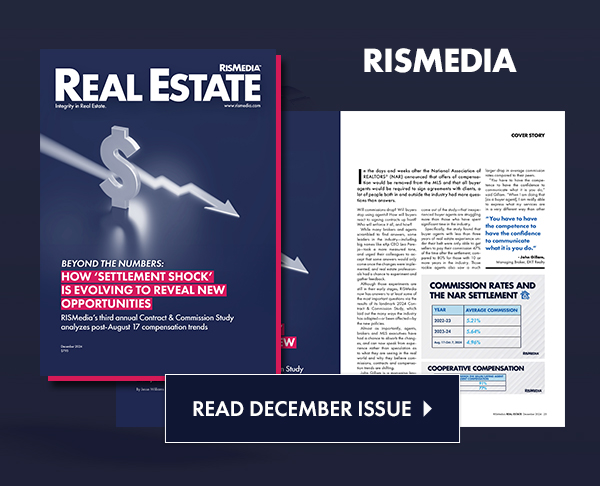The Power Broker Roundtable is brought to you by the National Association of Realtors® and Steve A. Brown, NAR’s Liaison for Large Residential Firms.
Moderator:
Steve A. Brown, Special Liaison, Large Firm Relations, NATIONAL ASSOCIATION OF REALTORS® (NAR)
Panelists:
Mike McGrew, NAR Treasurer and Chairman/CEO, McGrew Real Estate, Lawrence, Kansas
Wayne Chang, REALTOR®, Realty One Group, Irvine, Calif.
Christy Budnick, Broker/Owner, Berkshire Hathaway HomeServices Florida Network Realty, Jacksonville, Fla.
Steve A. Brown: According to NAR’s recent Profile of Home Buyers and Sellers, first-time buyers, who four years ago accounted for more than 50 percent of existing home sale purchasers, today make up only 38 percent of that very important market. That’s a significant drop, and the reasons vary from a host of economic factors, including individual debt or credit issues, particularly mounting student debt that delays potential homebuyers from saving for a home, fear of the underwriting process, and job stability to fluctuating market issues like low inventory—not to mention the difficulties in some regions as would-be buyers find themselves competing for ownership with investors and all-cash buyers. But while circumstances differ from market to market, one fact is clear: if the goal is to return to a balanced market, brokers need to find solutions for a double-edged challenge: reaching out to a greater number of first-time buyers and successfully getting them into homes. To get the ball rolling, we look to busy professionals from both coasts and the heartland. Let’s start with you, Mike. How do you see the challenge?
Mike McGrew: In our region, there is still some softness in the entry-level market. Demand diminished with the end of the federal tax credit, and it’s never quite recovered. The good news is, as NAR reported recently, pending home sales are edging up in most parts of the country – and I think you hit the nail on the head when you say the task now is two-fold. In my view, the challenge for anyone in our industry today is getting more customers into the real estate market, first-timers or not—and one effective way to do that is by focusing on customer education. Yes, there’s a lot of data on the web, but in most cases it takes a qualified real estate professional to put it into perspective. Whether they hear it in homebuyer seminars or on a one-to-one basis, potential buyers need to realize that the best time to buy is now, because prices will continue to rise and mortgage interest rates along with them.
Wayne Chang: I absolutely agree. Most of my business comes from referrals, and in every case, when I talk to new people, I try to help them realize what’s happening in today’s market – and what procrastinating will accomplish. I can show them that the house they can buy at one price today will likely cost them two to three percent more in as little as six months – which in our market can mean an extra outlay of $10,000 to $20,000 for the very same house. Once they realize what this can mean to them, the house hunt is generally on.
Steve A. Brown: You touched on an important point, Wayne. We can’t overlook the role that rising home prices play in keeping potential buyers from purchasing a first home. NAR research shows that the median home price has increased nearly 21 percent over the two-year period ending in the first quarter of 2014. Homeowners who purchased in advance of this gain benefited greatly. This means that first-time buyers are missing out on significant appreciation. For example, according to NAR, a buyer of a median priced home in San Jose, Calif. has gained nearly $300,000 in equity over this 8-quarter period. That’s a startling statistic, and one as brokers we all need to be aware of.
Christy Budnick:I agree, although in our area the rate of appreciation isn’t quite as dramatic. Depending upon the location in northeast Florida, the median home price has increased 10-15 percent over the last two years, creating a strong investment for those who reentered the market early. But 2014 should see another increase of 8-10 percent so it’s not too late to reap the rewards! In our market there is little shortage of buyers, first-time or otherwise, because we’re a military market, our average selling price is on the low side, and VA, FHA and bond loans are plentiful for credit-worthy buyers. But buyer education is an essential part of every agent’s playbook. Even in this time of common sense underwriting, agents can do a lot to show potential buyers how paying down debt and being more flexible can increase their chance of getting a loan.
Wayne Chang: You can’t underestimate what flexibility means when you are in negotiation. Reaching a fair price is one thing, but it’s just as important to be flexible about other issues, like lease-backs or inspection. Also, I try to get my buyers to get full loan approval in advance, not just get prequalified, and to understand the difference that makes to sellers in a competitive bidding situation.
Steve A. Brown: Having full loan approval puts you in the same league as any all-cash buyer—the best way to level the field.
Mike McGrew: I think there’s still some hesitancy to jump into the market on the part of younger buyers, many of whom are saddled with education debt or are worried about the job market. But the fact is, investors buy when prices are low and the return potential is high. When the market improves, as it is doing today, qualified first-time buyers stand a far better chance of finding the right house at a price they can afford than they have in recent months.
Wayne Chang: And I think first-time buyers become a little more confident and stand a better chance when they know their agent will go the extra mile. If inventory is low where my buyer can afford to live and the competition is stiff, I blast our letters to homeowners. The response rate is surprisingly good, and I end up making some good, off-market deals. The best part of that is that you wind up with happy clients—and that means more referrals for me.










